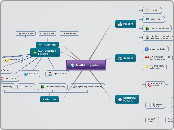UbD
Understand by Design
It's important to know how we define 'understanding' and how you yourself as a student or a teacher define 'understanding.'
Given what you know on a subject that you have an interest in and how you acquired that knowledge can help you better define the term. It also helps you in relaying that information on to someone else who may not have that same knowledge. If you have an understanding of a certain subject you may be to do things such as:
- Explain the subject in a clear and complete manner.
- Apply that understanding to new subjects which is what transfer knowledge refers to.
- Support your ideas.
- Educate others on the topic at hand.
- Interpret meanings for the topic.
- Recognize differing opinions on the topic.
If you are someone who does not have an clear understanding on a topic it may feel more like:
- You only remember what you were told.
- You can select correct answers from a group of options.
- Only reiterate what you've been given.
- Be able to transfer that knowledge onto other subjects only in the way that it was originally given to you.
Stage 1: Identify Desired Results
Identify Desired Results
This stage in the UbD process demands clarity and expectations on the topic at hand. This is where topic standards and outcomes are established for the students, what are some bid ideas and questions that need to be answered? What are the short-term goals and long-term goals that the teacher wants to see his/her students accomplish? What are the ultimate transfer goals that the teacher wants to students to master? Knowing this information can help the teacher do backwards planning which is what UbD (understanding by design) is all about.
What skills and education do the students need to acquire on this topic?
What are some questions that are essential for the students to explore?
What should students be able to understand to be able to transfer their learning to other topics?
What should students be able to do with their learning?
Stage 2: Determine Acceptable Evidence
Determine Acceptable Evidence
During this stage we need to determine the evidence that is needed for the students to be able to show and understand in order to demonstrate/relate them to the subject matter. As educators we must think about what assessments we will need to do in stage 3 that will show an adequate engagement from the students, and that will show the desired outcomes.
As teachers we not only want our students to be able to accomplish and understand a topic and be able to do the work for it but also show that they understand the topic and can effectively apply the knowledge that they learned from this topic to other subjects in school and ultimately life situations. Being able to know what assessments are needed for stage 3 can help determine our focus for what evidence in stage 2 will need to be accomplished.
It proposes an important "if-then" prospect. That if students can successfully apply their knowledge to other situations in life, then we as educators need to design a lesson plan backwards from genuine student performances and not text books.
What assessments will need to be done to assess other learning outcomes?
What assessments will need to be done to provide proof of transfer knowledge?
What products can reveal proof of efficient student understanding and can therefore be transfered?
Stage 3: Plan Learning Experiences and Instruction
Plan Learning Experiences and Instruction
This is the stage where instructors will actually plan experiences for the students that will allow them to achieve a successful outcome of their goals.
With clear results and assessments in mind, we can now plan the best activities and assignments to help the students attain the knowledge and skills needed for the topic and an understanding of important ideas. They will also be able to apply their new learning strategies to other life situations. When teachers follow this 3 stage process they can avoid past discrepancies when planning, a popular one is the all too common activity-oriented teaching. They will conduct activities that are hands-on and kid-friendly which are wonderful qualities but may not be focused on clear goals and fail to provide real evidence of learning. Such activities often are lacking long-term substance.
Another example, referring to a term referred to as coverage. It involves situations where teaching consists of just pushing through content, throwing information at the students in a lecture mannered environment. It's not a teachers job to simply recite information to their students, but to also uncover information and help the students develop a deeper knowledge of the subject matter and how to apply transfer qualities to their education.
How will the lesson plan help the students transfer their knowledge?
What activities will lead to the desired results?
How will the this unit be different in order to include all learners?









